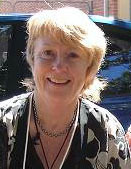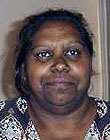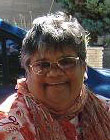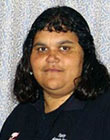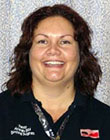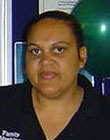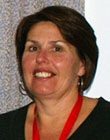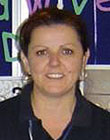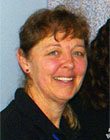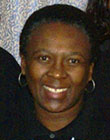Introduction
Poorer outcomes for Indigenous babies
When compared with developing countries, Australia's perinatal mortality rate while low, is double for Aboriginal and Torres Strait Islander births1,2, and with remote residence increases exponentially3.
Aboriginal and Torres Strait Islander babies are also more likely to weigh less than 2.5 kg at birth or be small for gestational age (SGA) and born pre-term, factors that increase the risk of perinatal death4. In a recent study of birth outcomes for 456 Aboriginal and Torres Strait Islander women in Townsville, Queensland, predictors of pre-term birth were: a previous pre-term birth; a low BMI; inadequate antenatal care; urine infection; and non-local residence. Tobacco use was predictive of SGA5.
There have long been concerns that Aboriginal & Torres Strait Islander women although having greater health risks, are less likely than others to attend mainstream health services for antenatal care6-9. Highlighting the issue almost 20 years ago, the Victorian Birthing Review recommended involvement of female Aboriginal health workers in the provision of antenatal and postnatal support and more consultation with Aboriginal women about their birthing needs10. Campbell7, in promoting partnerships in Victoria, highlighted that because Aboriginal midwives are in short supply, Aboriginal health workers and non-Aboriginal midwives would be likely to be working together. Meanwhile, midwives in Western countries, including Australia, troubled by increasing medicalisation of birth and its associated role erosion, have trialled working in teams or booking of case loads to provide continuity of care11-13. The midwifery models show reductions in most interventions, increased satisfaction with their care and a higher likelihood of women knowing their midwife11,12,14. However, these models have not specifically addressed issues of cultural safety, the importance of which has been stressed in the provision of maternity care for Aboriginal and Torres Strait Islander Australians by health professionals15.
Partnership models
Aboriginal and Torres Strait Islander life is maintained by the kinship network which has roles and responsibilities that ensure the maintenance of essential protocols16. It is important that protocols are adhered to during interventions that aim to improve health of Aboriginal and Torres Strait Islander peoples17. Franks et al18 have provided valuable guidance on working in intercultural and intellectual partnerships with Aboriginal people on health issues. Such partnerships developed from a position of mutual respect have been found to work well and be associated with effective interventions19.
Based on the rationale that increasing antenatal attendance and identifying health issues in pregnancy will in turn lead to healthier mothers, babies and children, several Aboriginal and Torres Strait Islander initiated partnership models are reported.
In New South Wales20, and Victoria7,21, strengthening of the role of Aboriginal health workers in the area of birth and the development of equal working partnerships with midwives is being supported. An account of one partnership showed Aboriginal women in Mildura (n = 25) to be more satisfied with many aspects of their community-based care in comparison with rural women Victoria-wide (n = 388); however, they were significantly less satisfied with their hospital care21.
In the Northern Territory, the Strong Mothers, Strong Babies, Strong Culture Program offers peer education in nine remote communities. Women selected by their community provide information and develop activities to improve the nutritional status of pregnant women in partnership with health workers, midwives and a nutritionist. Results from the first eight years showed increased birth weights in one of the intervention communities22.
Townsville Aboriginal and Islander Health Service (TAIHS) 'Mums and Babies Project' began after concerns about perinatal outcomes and low uptake of mainstream antenatal services. The TAIHS employs Indigenous health workers and GP obstetricians working together and has significantly increased antenatal attendance rates5,9.
Regional model for an Aboriginal Birthing Program
In South Australia, during 2003, state-wide community consultations with senior Aboriginal women, communities and agencies were conducted in relation to birthing concerns8. Key issues from the consultations were identified as:
- the importance of healthy pregnancy and birthing as a life process for the health of all Aboriginal and Torres Strait Islander communities
- improving health outcomes for Aboriginal mothers and babies
- the need for holistic, culturally focussed programs
- care provision by Aboriginal midwives and Aboriginal health workers who had received training in maternal and infant care.
These findings led to a successful funding application to introduce a birthing program in the regional towns of Whyalla and Port Augusta; both with highly respected Aboriginal communities.
The key principles, components and design of the program were:
- expert cultural guidance from an Aboriginal Women's Advocacy group that included Elders from language groups in and around the Spencer Gulf area
- Aboriginal Maternal and Infant Care (AMIC) workers in a leadership role
- inter-cultural partnerships and skill exchange with midwives with GP back up
- education and training for AMIC workers in antenatal, birthing and postnatal care, as appropriate
- commitment to continuity of care and primary healthcare principles
- 5 part-time AMIC workers, 5 part-time midwives allocated a case-load following a structured selection process
- site services of (a) Port Augusta provided antenatal; intra-partum and postnatal until 6-8 weeks; and (b) Whyalla provided antenatal and postnatal care until 6-8 weeks
- a management group for program support.
Health workers at the Pika Wiya Aboriginal Health Service in Port Augusta had already been providing antenatal care for approximately 2 years before the project commenced in February 2004.
Following the first 45 Aboriginal births an external research evaluation was conducted23. This article explores one aim of the evaluation: to investigate aspects of AMIC workers and midwives' working relationships and roles.
Methods
Approval to conduct the research was obtained from the human research and ethics committees of University of South Australia and the Aboriginal Health Council of South Australia.
A qualitative research methodology using semi-structured interviews with open-ended questions was used to address the research aim.
The questions were developed by two Aboriginal researchers [GA and SC] and a midwife [GS]. The AMIC workers and midwives were asked about their work role; their experience of working in inter-cultural partnerships with each other; benefits of working in this way; and their perceptions of the value of the program for mothers and babies.
Questions were piloted with an Aboriginal health worker and a community midwife both experienced in intercultural work and found to be clearly understandable and acceptable.
An Aboriginal researcher [GA] conducted face-to-face interviews with all five AMIC workers currently working in the program, four of whom consented to being audio-taped. Notes were taken by an observer for the fifth. Four out of the five midwives who worked part time in the program were available to be interviewed either face-to-face or by telephone and all consented to being audio-taped. Tapes were transcribed and returned for comment. The transcriptions were then examined by the research team and an independent Aboriginal researcher and agreement reached on the main themes following a weight of information.
The AMIC workers and midwives working in the program who were interviewed for the investigation are also authors of this article.
Results
Interviews with the Aboriginal Maternal and Infant Care workers
There were four interconnected themes that emerged from AMIC workers' responses about their work role:
Clinical work; social and emotional support; language and advocacy: The AMIC workers took a leading cultural role in the selection of women through to participation in all aspects of perinatal care. The role also involved a complex array of tasks and skills.
Clinical work and social and emotional support are both highlighted in this description by an AMIC worker during the antenatal period:
We get the girls to come up to the hospital if they want to have their antenatal screening ...and so we have to go out and arrange that ...[and] bring them into the midwives....the midwives are doing mainly the antenatal screening on the girl, but us AMIC workers, well me, I am trained in that area so I also do the checks along with them. ...
Another AMIC worker detailed the breadth of the role that included antenatal education and care, support in labour and postnatal and breastfeeding support:
What don't I do! Basically support - there's about 20 Aboriginal women that we get for the year and we get given a caseload of women that we take care of. So for me it's wherever those women are and I go out and support them as much as possible for their antenatal care and antenatal education you know helping them with anything they want to know during pregnancy. Making sure that their bloods are being done, all those sorts of things, and being a support for them during their birth, because the majority of the girls I've looked after I have been at the delivery there. So when they are ready to give birth to their baby... it's that birth support as well. After that - postnatal support as well, you know, help them with breastfeeding, and teaching them how to breastfeed ... and referral [to other agencies] too.
The clinical, social and emotional support continued into the postnatal period and beyond:
Making sure they get to that first baby's health check, making sure that we talk about contraception you know, what sort of thing they might want to have and organising that with whoever, and then making sure they have the check up with their doctor that everything is ok.
All AMIC workers provided support in areas such as housing and finances:
They might not have much because its their first baby, they want their own house, after living with you know, their family, they might want to get a house organised that sort of thing, I help them with that, furniture..., we use all the services that I can here...
....and they need support in finances...and we have a case conference meeting every fortnight. So it depends on the individual women what they want.
Language: Finding ways to communicate with women who did not speak, or whose first language was not English could be a consideration as highlighted below:
If it's a more traditional woman then we make sure we look at... all the things that we can offer which language group they belong to....
Advocacy: A crucial part of the role was to advocate for Aboriginal women in a hospital setting. Sometimes a woman might feel shame or be too shy to seek the help she needed with a non-Aboriginal staff member. According to one AMIC worker:
...a lot of the girls that you come across [are] like that, they don't want to talk to the nurses, and so they tell you, and they want you to go and talk to the nurses...
The value of being able to speak up with confidence when working with or alongside mainstream services was described:
I think it's important to know how to deal with mainstream services. They don't know our way and sometimes they push things the other way - that they want them. But I think its important to have strong Aboriginal women working in the program so that we can stop and say: 'No, hang on a minute, that's not the way to do it, that's not the way we do it, when it comes to our women, this is how it should be done'.
Mutually equivalent roles, a strongly emerging theme for AMIC workers questioned about working in partnership with midwives, is demonstrated in the following quote:
... I think non-Aboriginal people and Aboriginal people working together is a good way. Non-Aboriginal people can't offer the service without us, but we can't do it without them either... the clinical knowledge that we learned from the midwives, you know, without that, we couldn't do our work properly. But the same thing, they couldn't do it without us because they need our cultural knowledge. They need to know the way we deal with people. And I think the good thing is this; they teach us the clinical way and we teach them the cultural way. So it just works really well like that and in the partnership, between the hospital and Pika Wiya [Aboriginal Health Service]. That's the way it should be. That's the way it can work, you know, you feel like you can make a difference for our people if we work that way.
Two broad themes: Responses about the perceived value of the model for mothers and babies revealed two broad themes: clinical benefits and cultural safety.
Clinical benefits: the following quote reveals the perceived clinical benefits:
One of the things that we set up this program for was that we wanted to increase babies' weights. If they don't look after themselves in pregnancy babies can be small.... And breastfeeding, how important that is... I think a lot of our girls never had that information, and they didn't know that these things happened. So the more people are talking about it, the program set up like that, Aboriginal health workers doing that work with our girls, it's got to improve for the women and for the babies.
Cultural safety: Initially women were more likely to bring up issues when alone with an AMIC worker. However this changed when the women got to know the midwives and experienced AMIC workers and midwives working together:
But after a while though, those girls start to feel comfortable with the midwives as well, because they can see us working together.... And because there's only four midwives in the program, they are easy to get to know. They are great midwives, they are easy to talk to and they have worked with Aboriginal people before and they are willing to listen to what we say and they work along with all of us. So that's why when I talk about team they're our team as well.
While another AMIC worker thought the partnership should be introduced universally because of its benefits to Aboriginal women and babies:
I think Aboriginal health workers should be working with midwives everywhere, and you can really see the difference it makes, you know, for women and babies.
Interviews with the midwives
Of the four midwives interviewed, three were employed in Port Augusta and one in Whyalla. All but one had been involved from the beginning either directly or indirectly. All worked part time in the program along with other work responsibilities. In response to the question about their work role, three themes were identified: setting up the program, clinical midwifery care, and clinical skill-sharing.
Setting up the program: in which initially a number of challenges were posed is described by a midwife:
There were problems with infrastructure... the biggest concern was to have our mobile phone to be on call, how can we do it without a mobile phone? And then we had to sit in the birthing suite at the desks there, and there was no privacy for us or for the women...and the families would be there, sometimes 16 family members and us - that's the midwives and AMIC workers.
Clinical midwifery care: was mentioned by midwives as one of their major roles. At the Whyalla site this involved the provision of antenatal care and postnatal care and home visits with the AMIC worker. At the Port Augusta site total midwifery antenatal, intrapartum and postpartum care24 was provided in partnership with the AMIC workers.
Clinical skill-sharing: and support for AMIC workers was another major part of the midwives' role:
For the midwives, it's not just about looking after the women ...but a big part of it was supporting those AMIC workers in their learning and all that is to do with that.
In relation to working in partnerships with AMIC workers clinical skill sharing and mentoring continued to be important and midwives enjoyed sharing their skills and knowledge with the AMIC workers in equivalent working relationships.
...very committed - don't want it to fail, make sure their clinical skills and competencies are up to date - so they're a happy member of the team.
While the clinical skills of the AMIC workers were described positively:
Oh, they are fantastic!
Two of them are really on their feet now. Really [names AMIC worker] is as good as a midwife no, really, she knows when the tests are due all that sort of thing. I can say to her 'Can you look after this girl?' and I know there is nothing she doesn't know... she knows what's due for when, and you know what's normal and what's not... she knows when to go and get some help so I could easily go on holidays and she will contact the doctor if she needs to and I know that girl will be well looked after.
Other inter-connected themes from the question about working in partnership were: time and commitment to working inter-culturally; issues with the new AMIC worker role; resistance of some hospital midwives; two-way learning; and respect for AMIC workers' cultural knowledge and community links.
Time and commitment to working inter-culturally: Along with a clear commitment to working in partnership, the amount of time needed to establish the relationships was identified:
Well yes, it's been really good, especially the experienced ones, but in the beginning, even with the experienced ones ... you really needed to look after them and make sure there was someone there each day.
A midwife described the initial experience of working with the AMIC workers new to the role in relation to the time required for mentoring as well as limited funding:
And we realised we didn't have enough funding, you know, continuity with the same person there each day to look after them - the same person. Instead it would be me one day or [names midwife] another day or one of the other midwives. We have got other work commitments as well and it's not like all we have to do.
However, midwives believed that the partnerships were reciprocal and respected the AMIC workers' community skills.
Well, it's certainly mutual for me, they are great. They know where and how to find people etc - where and when and how long they have been in town and you know, all that sort of stuff, its fantastic.
Issues with the new AMIC worker role: issues arose as explored by a midwife:
...and you know, what is an AMIC worker? No-one ever produced a job description per se. They would go... to the regional meeting, and a lot of the time I would be asking what skills can we pass on to the AMIC worker and how far can you go? And the answer I guess was 'It depends on the skills of the person and their qualifications' - and it does vary...
Resistance of some hospital midwives: was an issue in the beginning, with reluctance to accept and provide support for the new program and the AMIC workers from some of the hospital midwives at both sites.
In the early days I think it was - the difficulty was - with the mid staff, there were lots of negative comments about a new model of care, they seemed threatened, didn't want it to work.
When AMIC workers were placed in the hospital setting for clinical learning experience a midwife noted a marked lack of enthusiasm from staff was described by a midwife:
I think in the beginning we had the vision that they could move through their role, you know, bridge that gap between community and hospital, but that didn't happen. The midwives were: 'Well what are they supposed to do? How do we know exactly what skills they have got?' You know there was a lot of that sort of negative stuff with the hospital staff. Some of them were very good but some were not. And there was a lot of difficulty with them standing around without things to do, and they felt shame, but that's changed now because the AMIC workers are becoming more confident.
However, there was agreement that with time, hospital staff had become more accepting of the program.
Respect for AMIC workers' cultural knowledge and community links: Respect for AMIC workers' cultural knowledge and community links emerged as another strong theme:
Some we don't take on because it's just too much you know, mental health issues... that sort of thing. We discuss it as a team who we take on. Sometimes the AMIC worker will say well I can't work with that one; family [kinship] etc and we respect that. They still get the care from the community midwives who ever they are and that's just the way we have to do it. And it's very good for the community midwives to be working alongside and networking with the AMIC workers and the program... it's a great way to work, and everyone is learning.
Two-way learning: this learning occurred and was identified in the following quote:
[there were] remarkably different opinions, like who we should take and who we should not look after. Like, we have had some big differences.. But we have managed to be able to.... I think the relationship is stronger because of it... feeling you can say what you think... it goes both ways, so at the end of the day we have to keep reminding ourselves that this is AMIC worker led... and I have learned to listen.
Increased use of services: The response to the question about whether midwives felt the program provided benefits for the mothers and babies is described by a midwife:
Well, we just did a presentation stats show. Our key performance indicators are: increases in babies weighing over 2.5 kg, decreases in smoking, increases in breastfeeding and increases in antenatal visits to above seven. So we have been really successful in that, because of the contacts and knowing where to find the girls, and encouraging them to come and look at the birthing suite and the hospital, and getting to know who their care workers are ... Mainstream services were not working so we have made huge increase in the numbers coming for their antenatal visits, it's really improving. ... They get given pictures of their midwife and AMIC worker. We [Port Augusta] have 300 births a year and 100 are Aboriginal so we still have a lot more to get... but what is also great is that they want their midwife.
Cultural benefits and safety: These elements were highlighted by midwives. Particularly rewarding were births where kinship functions strongly as demonstrated by the words of two of the midwives:
I have been to beautiful births with the mothers, the grandmothers, the aunties and the kids - beautiful. Not all the time; but we have had some; and the girls that have got it are the births that do go right.
It's wonderful when the grandmothers are there and it's done traditional way, those ones do really well. It's so rich and fulfilling.
A midwife recently employed in the program provided additional comments about her interest and needs in relation to language and culture:
I think I need to learn more about their culture and to learn some of the common words which they use you know Aboriginal literature or languages, especially when we are talking about - you know, the stages of labour, specific things, like when to push and that sort of thing - in their language....
I would like to know more about the culture of their clans so we can incorporate it into the system, the role of grandmothers etc. It's very good when you see the mother feeding the baby doing it the proper way for the culture, very interesting to learn. Some people they tend to be culture sensitive and they think that it's not for us, it's for those people, but we need to learn about these things to be of assistance and in our work. I'd like more input of the Elders, of the grandmothers, so we can have their knowledge ...
The need for secure funding, and further strengthening and development of the model were additional themes raised. For example, it was noted that more midwives and AMIC workers are needed to reach more Aboriginal women and families. The need for the continuity of a fully supported antenatal, intrapartum and postpartum service available at both sites was reiterated. There was also a need for more clerical support, while office and clinical space and equipment issues were ongoing, for example cars were in short supply.
Discussion
This study provides a snapshot of a living, developing, inter-cultural partnership established to tackle the vitally important issue of Aboriginal mothers' and babies' health. Although the sample was small, all AMIC workers and four out of five of the midwives working in the program were interviewed and are also named investigators. The findings are therefore likely to accurately reflect the views of the team. In addition, we have not located any other published study of Aboriginal health worker/ midwife partnerships from their own perspectives. Our study makes a new contribution to the topic and highlights several benefits of working this way.
The following discussion summarises the findings from the key questions.
The roles of AMIC workers and midwives
The AMIC workers, in line with the literature and the community consultations that led to the introduction of the model7,8,10 highlighted the themes clinical care provision (including leadership in selection of women into the program); social and emotional support; and a strong advocacy role that included support for women from different language groups. While for the midwives their initial role had involved setting up the program, providing clinical midwifery care and clinical skill-sharing.
Working in partnership
There was clear evidence from the interviews that that inter-cultural partnerships between the AMIC workers and midwives had evolved, were mutually satisfying and provided opportunities to work both ways. For the AMIC workers a strong theme was of mutually equivalent roles: '...they teach us the clinical way and we teach them the cultural way'. For the midwives, along with ongoing clinical skill-sharing other themes were: the time and commitment required; the developing AMIC worker role; a certain resistance of some hospital staff; two-way learning and a deep respect for the AMIC workers' cultural knowledge and growing clinical skills. The midwives learned from AMIC workers about kinship networks and Aboriginal knowledge and ways of working. Differences of opinion, when they occurred, were worked through and midwives listened and learned when faced with the cultural and community knowledge of the AMIC workers highlighted in the words; 'and I have learned to listen'. On the other hand, the midwives shared vital clinical knowledge and skills with AMIC workers. The time needed to develop relationships revealed by the research is something unquestioned in Aboriginal life, compared with mainstream life17,18. The initial reactions of hospital midwives may have been an indication of these different approaches.
Benefits for mothers and babies
The employment of AMIC workers in a leading cultural role in the partnership appeared to result in a higher use of services23 although this part of the study was not designed to address the issue of improvements in outcomes for mothers and babies. However anecdotal evidence from a midwife provides a pointer: 'Mainstream services were not working so we have made huge increase in the numbers coming for their antenatal visits, it's really improving.' An AMIC worker also suggested clinical benefits: 'And breastfeeding, how important that is... I think a lot of our girls never had that information, and they didn't know that these things happened.' Another important benefit of the program was cultural safety15 in the words of an AMIC worker: 'I think Aboriginal health workers should be working with midwives everywhere'. Midwives too described the joy of involvement in birthing support where culture was strong.
Application of the program differed in important aspects between the two sites. The main differences were support and care provision offered by Pika Wiya Aboriginal Health Service in Port Augusta that had already been providing antenatal care for 2 years. The team from this site was able to offer labour care, enabling not only continuity of care, but also of carer (AMIC worker and midwife).
Several changes have now been introduced:
- the Whyalla campus provides intrapartum care
- there has been one extension of the original seeding funding
- there are plans to introduce the model more widely throughout rural South Australia
- a course for AMIC workers is under development under the auspices of the Aboriginal Health Council of South Australia.
The AMIC worker role will continue to need promotion, acknowledgement, support and development. It is also important to acknowledge that AMIC workers, as members of their communities, have obligations and priorities within their own family systems as well as their work in the program. It is clear that building on the AMIC worker and midwives relationships will be essential in sustaining the program.
In conclusion, AMIC workers and midwives were successful in developing rewarding and equivalent inter-cultural partnerships. The model has the potential for wider introduction and evaluation, as attested by the words of an AMIC worker: 'That's the way it can work, you know, you feel like you can make a difference for our people if we work that way'.
Acknowledgements
The authors acknowledge the Aboriginal Women's Advocacy Group who have played, and continue to play, a pivotal role in providing expert cultural guidance to the program. Thank you also to Christine Franks of Spencer Gulf Rural Health School, South Australia, who shared her expertise on working in equivalent inter-cultural partnership during all stages of the research and in the editing of this paper. We also acknowledge the Northern and Far Western Health Service, now Country Health South Australia who funded the research and other members of the evaluation team: Pauline Zanet, Judy Taylor, Katrina Coulthard, Katrina Paige and Jonathan Newbury.
References
1. Laws PJ, Sullivan EA. Australia's mothers and babies 2002, AIHW cat no PER 28. Canberra, ACT: National Perinatal Statistics Unit, Australian Institute of Health and Welfare, 2004.
2. Chan A, Scott J, Nguyen AH, Sage L. Pregnancy outcome in South Australia 2006. Adelaide, SA: Pregnancy Outcome Unit, 2007.
3. Chan A, Scott J, Nguyen AH, Sage L. Pregnancy outcome in South Australia 2004. Adelaide, SA: Pregnancy Outcome Unit, 2005.
4. Humphrey, MD, Holzheimer DJ.. Differing influences on Aboriginal and non-Aboriginal neonatal phenotypes: a prospective study. Medical Journal of Australia 2001; 174(10): 503-506.
5. Panaretto K, Lee H, Mitchell M, Larkins S, Manessis V, Buettner P, Watson D. Risk factors for preterm, low birth weight and small for gestational age birth in urban Aboriginal and Torres Strait Islander women in Townsville. Australian and New Zealand Journal of Public Health 2006; 30 (2): 163-170.
6. National Research & Medical Council. Options for effective care in childbirth. Canberra, ACT: Australian Government Publishing Service, 1996.
7. Campbell S. From her to maternity. Melbourne, Vic: Victorian Aboriginal Community Controlled Health Organisation, 2000.
8. Buckskin M. 2004. Aboriginal Births in South Australia. In: Healthy Aboriginal Mothers and Babies: Improving Indigenous Outcomes. Aboriginal Health Council of South Australia: State-wide Women's Workshop. 19 March 2003, Sydney, NSW; Perinatal Indigenous Network of Perinatal Society of Australia & New Zealand, 2004.
9. Panaretto KS, Lee HM, Mitchell MR, Larkins SL, Manessis V, Buettner PG et al. Impact of a collaborative shared antenatal care program for urban Indigenous women: a prospective cohort study. Medical Journal of Australia 2005; 182(10): 514-519.
10. Lumley J, Small R, Yelland J. Having a Baby in Victoria. Final Report of the Ministerial Review of Birthing Services in Victoria. Melbourne, VIC: Department of Health Victoria, 1990.
11. Flint C, Poulengeris P, Grant A. The 'know your midwife' scheme - a randomised trial of continuity of care by a team of midwives. Midwifery 1989; 5(1): 11-16.
12. Turnbull D, Waldenstrom U. A systematic review comparing continuity of midwifery care with standard maternity services. British Journal of Obstetrics & Gynaecology 1998; 104: 1160-1170.
13. Johanson R, Newburn M, Macfarlane A. Has the medicalisation of childbirth gone too far? BMJ 2002; 324(7342): 892-895.
14. North Staffordshire Changing Childbirth Research Team. A randomised study of caseload midwifery and traditional 'shared-care.' Midwifery 2000; 16(4): 295-302.
15. Kruske S, Kildea S, Barclay L. Discussion: cultural safety and maternity care for Aboriginal and Torres Strait Islander Australians. Women and Birth 2006; 19: 73-77.
16. Carter E, Hussen E, Abbott L, Liddle M, Wighton M, McCormack M et al. Borning: Pmere Laltyeke Anwerne Ampe Mpwaretyeke, Congress Alukura by the Grandmothers Law. Australian Aboriginal Studies 1987; 1: 2-33.
17. Australian Health Ethics Committee. Exploring what ethical research means: resource package for Aboriginal and Torres Strait Islander communities and organisations. Canberra, ACT: National Health & Medical Research Council, 2005.
18. Franks C, Curr B, Turner M, Poulson K. Keeping company; an inter-cultural conversation. Whyalla, SA: Spencer Gulf Rural Health School, 2007.
19. Franks CC. Preventing petrol sniffing in Aboriginal communities. Community Health Studies 1989, 13(1): 4-12.
20. New South Wales Department of Health 2003. Aboriginal Maternal and Infant Health Strategy. Evaluation: Final Report 2005. Sydney, NSW: New South Wales Department of Health, 2003.
21. Campbell S, Brown S. Maternity care with the Women's Business Service at the Mildura Aboriginal Health Service. Australian & New Zealand Journal of Public Health 2004; 28: 376-382.
22. Tursan D' Espaignet E, Measey M, Carnegie M, Mackerras D.. Monitoring the 'Strong Mothers Strong Babies Strong Culture Program': the first eight years. Journal of Paediatric & Child Health 2003; 39: 14-21.
23. Stamp G, Champion S, Zanet P, Anderson G, Coulthard K, Paige K et al. Regional Family Birthing and Anangu Bibi Birthing Program: the first 50 births. Report commissioned by Northern and Far Western Health Service. Whyalla, SA: Spencer Gulf Rural Health School, 2007.
24. International Confederation of Midwives, 2005. The International Definition of the Midwife: adopted at Council Meeting 19th July 2005, Brisbane. (Online) 2005. Available: http://www.medicalknowledgeinstitute.com/files/ICM%20Definition%20of%20the%20Midwife%202005.pdf (Accessed 3 July 2008).
Published 25 July 2008; modified 29 July 2008.
Correction to author B Warren's address
